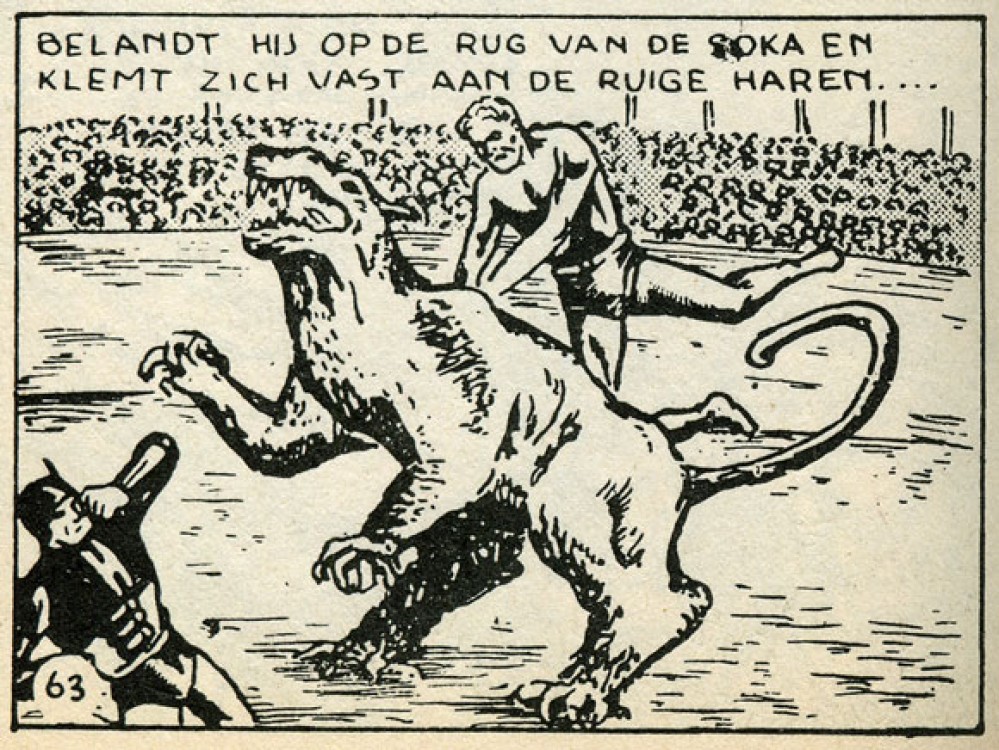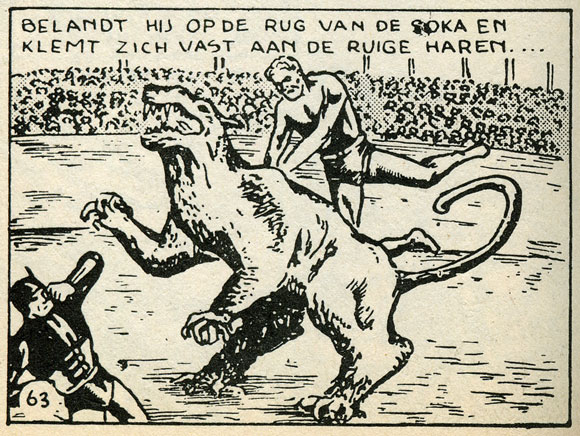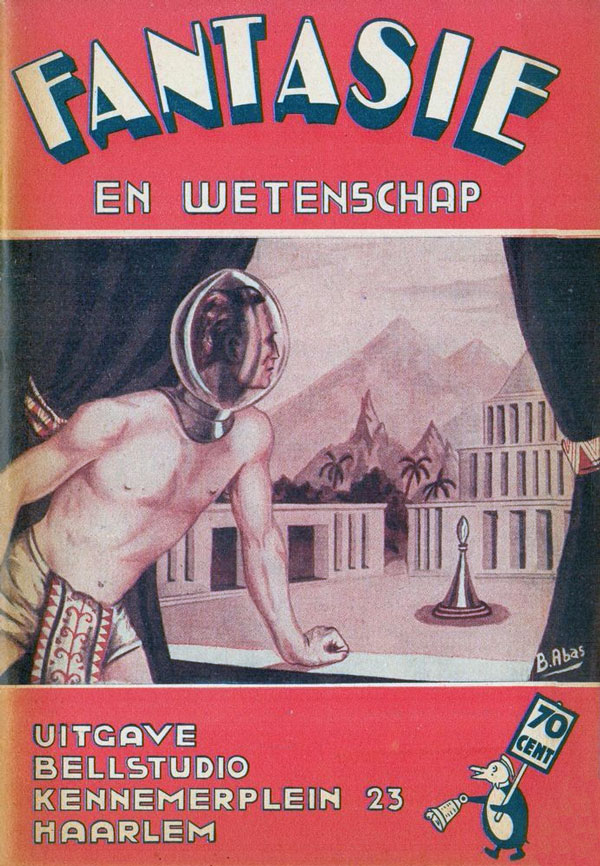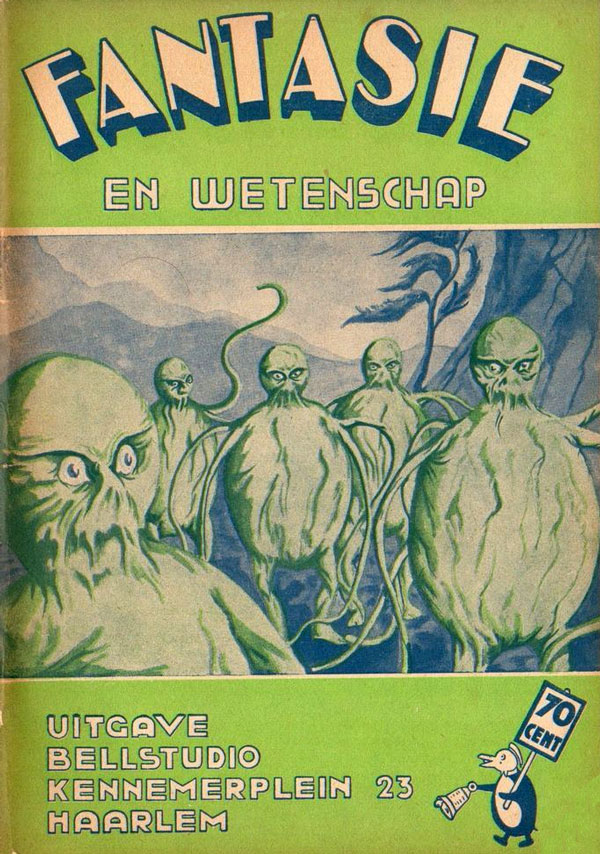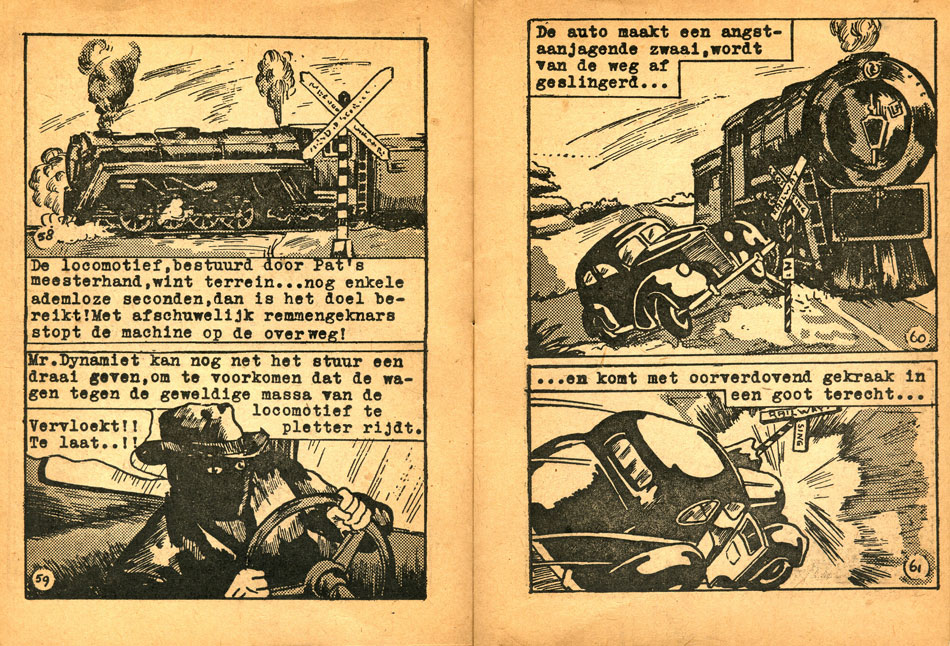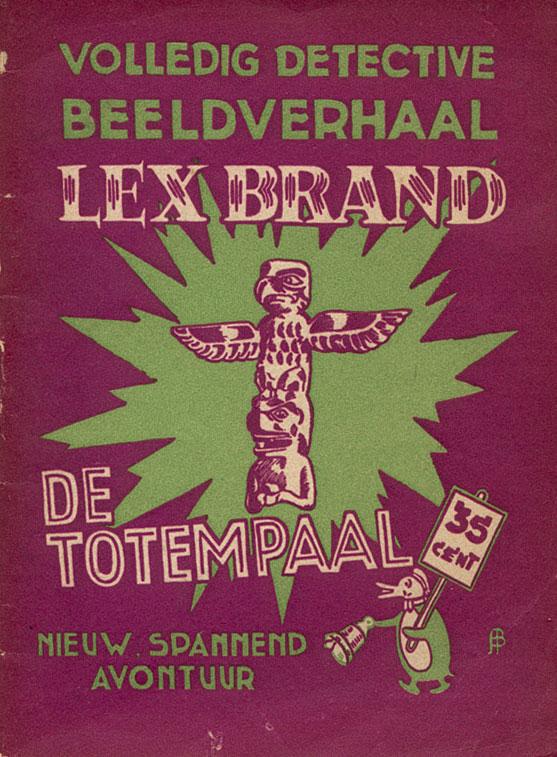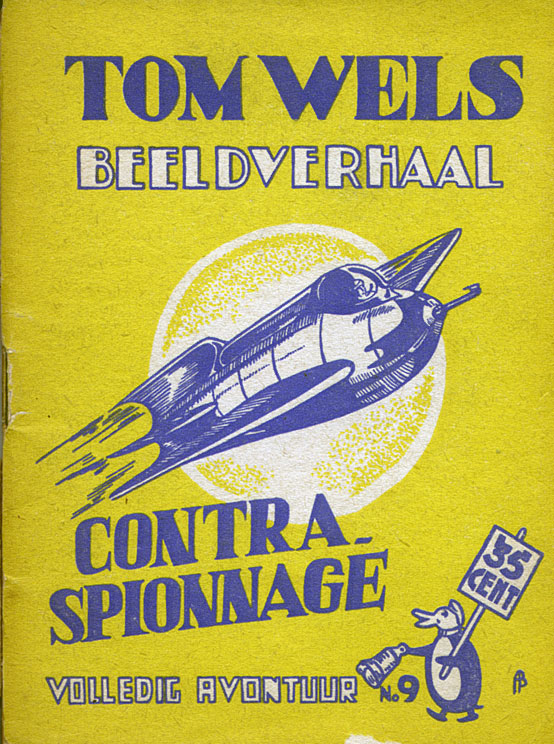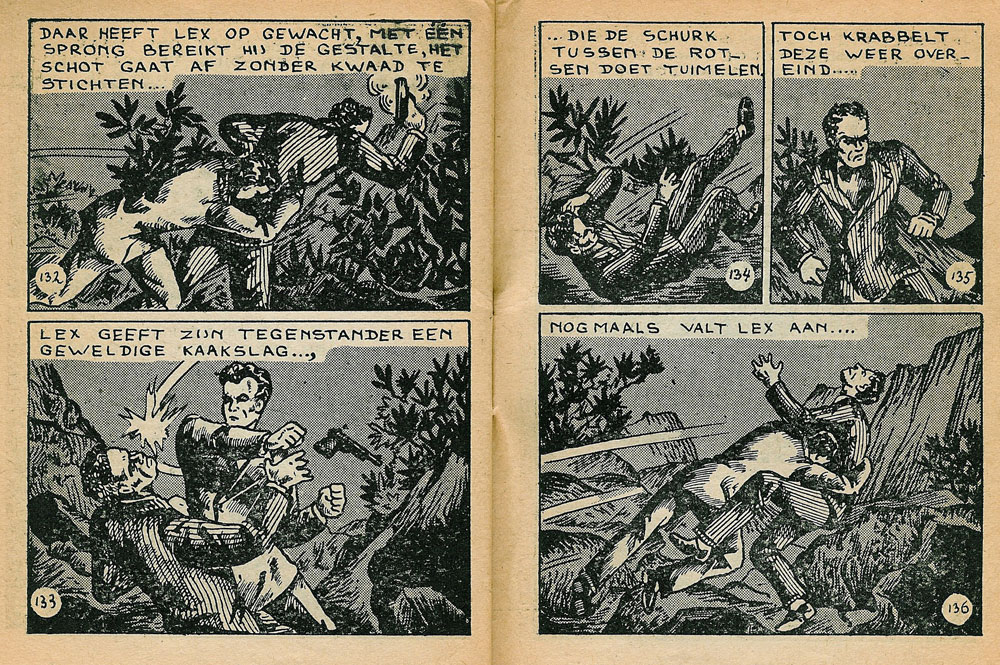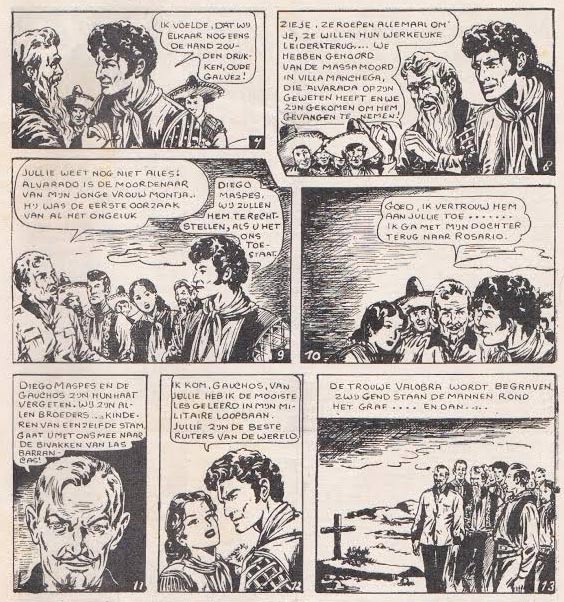'Tom Wels'.
Ben Abas was a mid-20th century Dutch pulp illustrator and comic artist. He is best remembered for his work on "picture novels" like 'Spot Morton' (1947) and 'Lex Brand' (1947-1954) through his own Bell Studio, and his collaboration with Lo Hartog van Banda on the sci-fi comic 'Martin Evans' (1955). In the mid-1950s, Abas moved to Australia, where he spent the rest of his life.
Early life
Benjamin Abas was born in 1926 in Poerworejo, Java, in the Dutch Indies (present-day Indonesia), where his Jewish father Leman Pinas Abas worked in a sugar factory. He had two older brothers, Leo (1917-1997) and Johan Frederik (1922-2017). At the time, Dutch children from the colonies were often sent to the Netherlands for their secondary education. It is known that Leo attended school in the region of Haarlem in the 1930s, so his younger brother Ben was probably sent along. On 22 July 1938, the local newspaper Bloemendaalsch Weekblad mentioned a Ben Abas as one of the graduates of the local Juliana-school.
Issues #2 and #3 of Fantasie en Wetenschap (1948-1949).
After World War II, the Abas family had apparently relocated to the Netherlands for good, settling in Haarlem, where father Abas and his sons Ben and Leo eventually ventured into publishing with their Bell Studio imprint. Ben and Leo Abas became active science fiction fans, attending international conventions. They were accompanied by Ben's wife Barbara V. Abas (née Bouwens, 30 September 1921-21 August 2000). One of these gatherings was the 1951 Festivention in London over Whitsun at the White Horse and Royal Hotel. Abas also attended the London SF Con of 1952.
According to a report from the Festivention sci-fi convention, printed in Fantasy Times #131, Abas had told reporter Michael Corper that he and his wife had spent four long war years separated from each other in Japanese POW camps in the Dutch East Indies. Since Ben was only fourteen years old when the war started, it is more likely that this anecdote referred to Ben's older brother Leo Abas, who had served during the Battle of the Java Sea in 1942. A chronicle on the website of the Schiedam Municipal Museum indeed describes how Leo and Jopie Abas had met in Haarlem in 1939, but had returned to the Dutch Indies after World War II broke out. After their marriage in 1941, Leo had to fulfill his military service. Shortly after the capitulation and the Japanese occupation, he was forced to work as a prisoner of war on the infamous Burma railway. It wasn't until their 1946 repatriation when the couple met again.
Picture novels/Bell Studio
Science fiction was also the main genre of Ben Abas' comics output. Between 1947 and 1955, he worked on several series of digest-sized "picture novels", called "beeldromans" in Dutch. These action-filled comic books appeared in the wake of the successful 'Dick Bos' comic booklets by Alfred Mazure. Among Abas' early work are the first six 'Spot Morton' books, made in the period April-September 1947 for the Amsterdam-based publisher Periodiek. He was succeeded on the series by Georges Mazure.
Cover illustrations for two Bell Studio picture novels.
Together with his father, Abas then began releasing his own "beeldromans" through the family's Bell Studio, first based at 23 Kennemerplein in Haarlem and then in Lunteren (1952-1955). The imprint's mascot was a penguin ringing a bell and carrying a sign with the booklet's 35 cent prize. His main heroes at this publishing imprint were the detective 'Lex Brand' (1947-1954, with texts by his brother Leo Abas) and the space traveler 'Tom Wels'. The artist also drew two issues of 'Kara Ben Nemsi' (April/May 1952) and three of 'Texas Ranger' (July/September 1954). Another "beeldroman" series published by Bell Studio were three volumes of 'De Groene Straal' (March-July 1955) by Dick Vlottes. From the summer of 1947 until the summer of 1949, Abas drew an average of two monthly "picture novels". The second series of 'Lex Brand' ran from July 1952 until May 1954. From July to September 1950, Abas presumably also drew the balloon comic 'De Strijd der Gaucho's' for Okido magazine, published by Neerlandia in Utrecht.
However, from 1948 on, these small-format comic books came under fire from the Dutch government and educators, because they were supposedly a bad example to children and causing "reading laziness". To counter the backlash against comic books, the Bell Studio team tried their hand at publishing the science fiction magazine Fantasie en Wetenschap (1948-1949), made in collaboration with Ben Abas' friend Lo Hartog van Banda. It stalled out after only four issues. By 1955, Bell Studio canceled all of its activities. One of the reasons could be the general opinion about comic books becoming more aggressive, but also Abas' upcoming move to Australia. Only in the 1980s were 'Lex Brand' and 'Tom Wels' reprinted by Peter de Vos and H. Bontkes and their Foundation Uitgeverij Beeldromans.
'De Strijd der Gaucho's'.
Toonder Studio's
In 1952, Abas and his friend Lo Hartog van Banda offered their services to the Toonder Studios in Amsterdam, at the time the largest production house of comics and animation in the Netherlands. One of the projects that Hartog van Banda proposed was a comic about a nobleman called 'Baron van Tast', which had artwork by Ben Abas. This comic was rejected, although the plot was reused for a 1960s 'Baron Bluff' episode, drawn by Jan van Wensveen. While Hartog van Banda eventually became the studio's main scriptwriter, Abas' tenure at Toonder was far from easy. Around 1953, he got the opportunity to work for Marten Toonder's 'Tom Poes' balloon strip in the Belgian weekly Kleine Zondagsvriend for a short while.
Martin Evans
In 1954, Abas teamed up with Hartog van Banda again to create the sci-fi newspaper comic 'Martin Evans', starting with the serial that later became known as 'Het Venuskruid' ("The Venus Herb"). In the December 1954 issue of the Toonder Studio's syndication magazine Cartoonder, the comic strip was first advertised. In the following year, the strip was first published in Scandinavian newspapers, as well as the Belgian magazine 't Kapoentje. After 100 episodes, the Toonder Studios decided to cancel the comic, apparently out of dissatisfaction with its overall theme and quality. Abas was allowed to continue the comic on his own, but then without the studio as intermediary. Offended on how he was treated, the artist dropped the comic altogether. At the time, writer Hartog van Banda was unaware of what went on behind the scenes. As a result, he wasn't amused by Abas' sudden and unexplained departure. The former friends never had the chance to work things out, because around that time, Abas had emigrated to Australia. The original 'Martin Evans' story was finished by an unknown studio co-worker.
In the Netherlands, the 'Martin Evans' comic didn't appear in regional newspapers like Echo and De Stem until 1958 (when Abas was already in Australia). The Toonder Studio's had brought the comic back into circulation, because space travel had gained in popularity after the 1957 Sputnik launch. For these new publications, the final non-Abas strips were remade by penciler Thé Tjong-Khing and inker Dick Vlottes. In 1959, Banda and Vlottes also made a second episode, 'De Zero-Vaart'. That same year, a third and fourth story were plotted by Banda, but scripted by Harry van den Eerenbeemt and drawn by Gerrit Stapel.
Australian years and death
It is not certain when exactly Abas left the Netherlands. One estimation is 1954-1955, because then his comic activities came to an end, and might explain why he and Hartog van Banda didn't have the time to patch things up. However, the Fremantle Passenger List shows that the Abas family arrived at Fremantle from Amsterdam in April 1956 on the ship "Johan Vanoldenbarnevelt". Settling in the region of Perth, Ben and Barbara Abas have lived in the suburbs Leederville and Mt. Lawley. In Perth, Abas worked as a drawing teacher in Perth, and was also active as a commercial artist. He made the illustrations for a series of school books called 'New Living English' by Roy W. Grace, published in Perth in 1974 and 1975. On 16 October 1970, the Dutch Australian Weekly reported about an art exhibition in Perth, which included oil paintings by Ben Abas and his wife Barbara.
BillionGraves.com reports that a Ben Abas died on 16 July 1990 at the age of 64. He is buried in Kelmscott, at Saint Mary-in-the-Valley Church Cemetery, near Perth, City of Armadale, Western Australia. His wife Barbara died ten years later.
In the Dutch city of Almere a street was named after Abas' character Tom Wels, as part of the 2004 "Comics Heroes" district.


